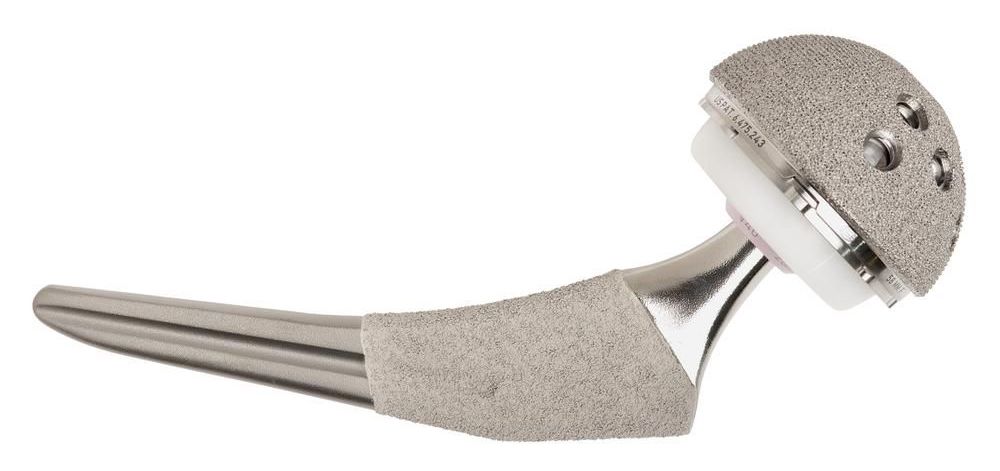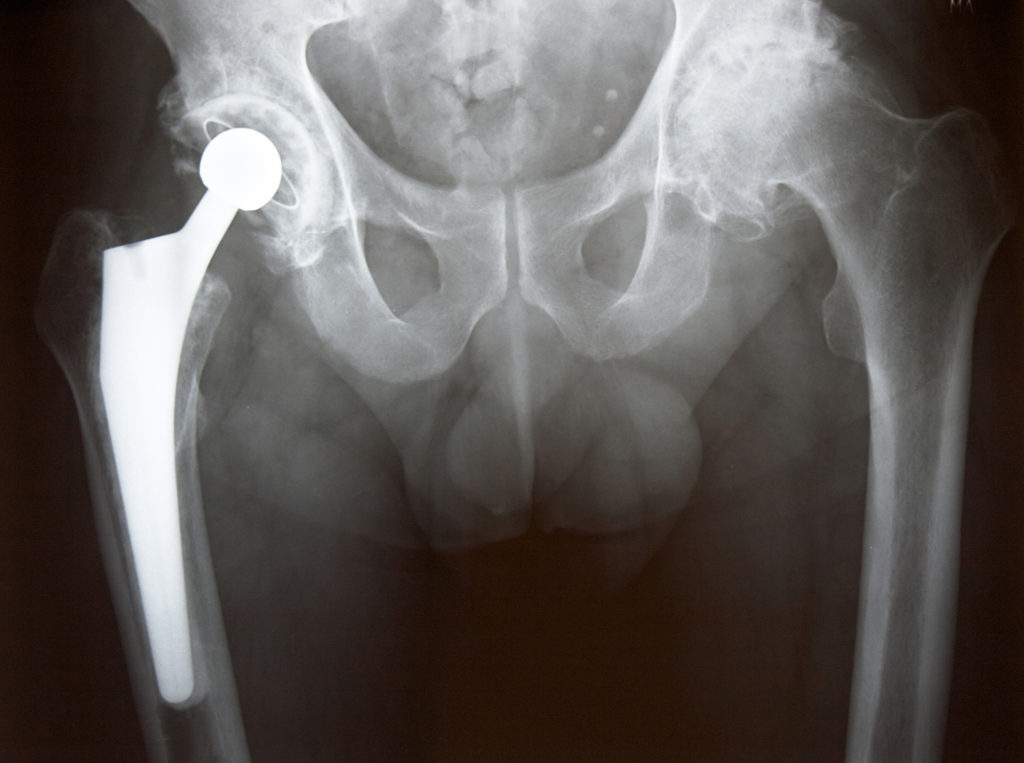EVPRO tackles the main cause of complications and replacement of hip implants, namely aseptic loosening induced by inflammation at the original anatomical location of the removed endoprosthesis.
The objective of EVPRO is to devise a innovative biologically active coating for hip revision endoprosthesis, which is able to control inflammation at the biointerface of the endoprosthesis and promotes bone regeneration. The coating is applied at the interface between implant and inflamed tissue to detect the inflammation and modulate it proportionally and self-regulating. Additionally, the coating instructs bone forming cells, so-called osteoblasts, to migrate into the coating to improve osseointegration resulting in a better healing and an increased lifetime of the implant.
EVPRO ensures mobility for elderly patients and improves their quality of life and well-being by reducing the problems associated with implanted joint prostheses and reducing the number and frequency of subsequent medical treatments. This leads to reduced treatment costs and hospital stays. In addition, the reduction in the number of procedures leads to an overall decrease in risk.
The three fields of application have been identified as primary hip revisions, secondary hip revisions due to aseptic loosening and the transfer to further implants.
Primary Hip Revision

The first application case of the EVPRO technology is the primary hip revision for “youngsters”, specifically for people of the age 50. Due to the increasing load and stress on the implant, the goal is to maximize the implant’s lifetime and thus reduce the number of repeated replacements.
Secondary Hip Revisions

Secondary hip revisions due to aseptic loosening are the proof of concept application field of EVPRO. As a result of the innovative EVPRO coatings it will be able to control inflammation at the biointerfaces of the endoprosthesis and reduce the risk of aseptic loosening. Due to this positive effect on inflammatory processes, the number of hip revisions will be reduced and medical treatment costs decreased.
Transfer to further implants

The third field of application is the transfer of the EVPRO technology to other implants such as knee endoprosthesis. The entire number of knee endoprosthesis implanted in 2012 in all OECD states was about 1.0 Million. In 2018, this number was expected to increase to an estimate of about 660,000 in the EU and is expected to grow further for all OECD states. That will lead to a significant increase of revisions in the future, as most of the described findings for hip revisions can be transferred to knee revisions.

EVPRO will also provide a novel platform for future application of MSC-EVs-hydrogel-TiO2 coating to many types of implants including, for example, intramedullary nails / fixations or dental implants.
